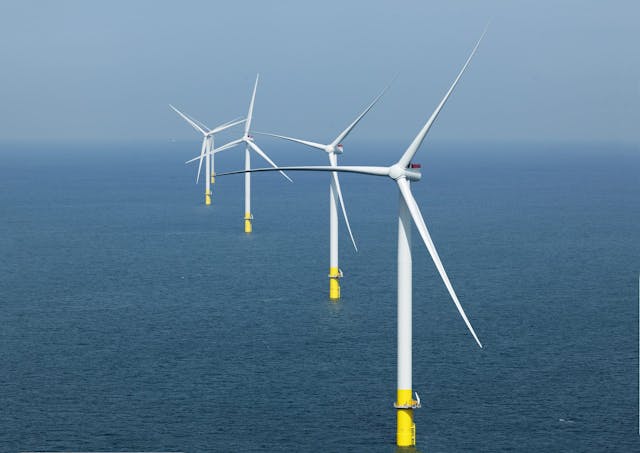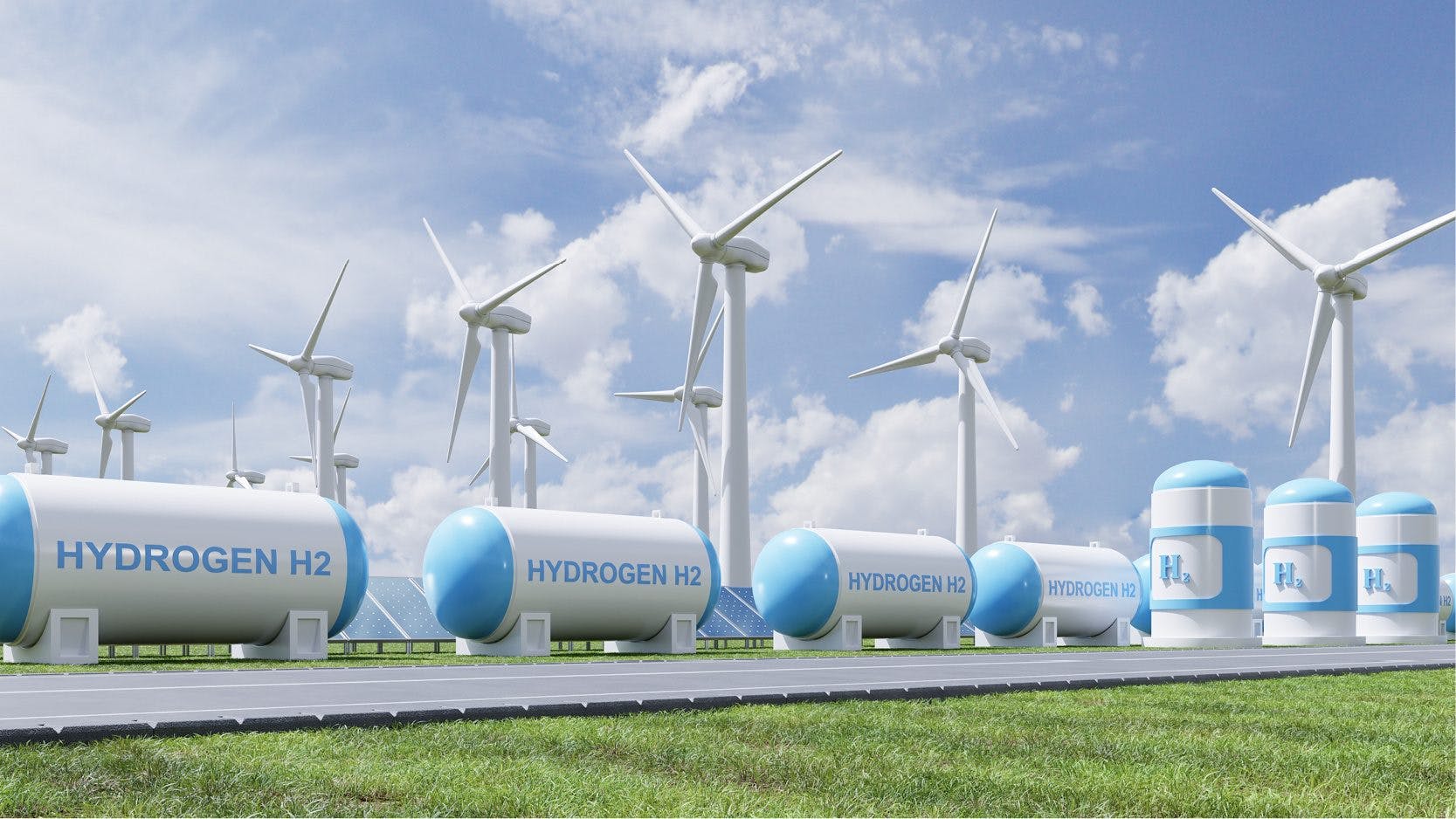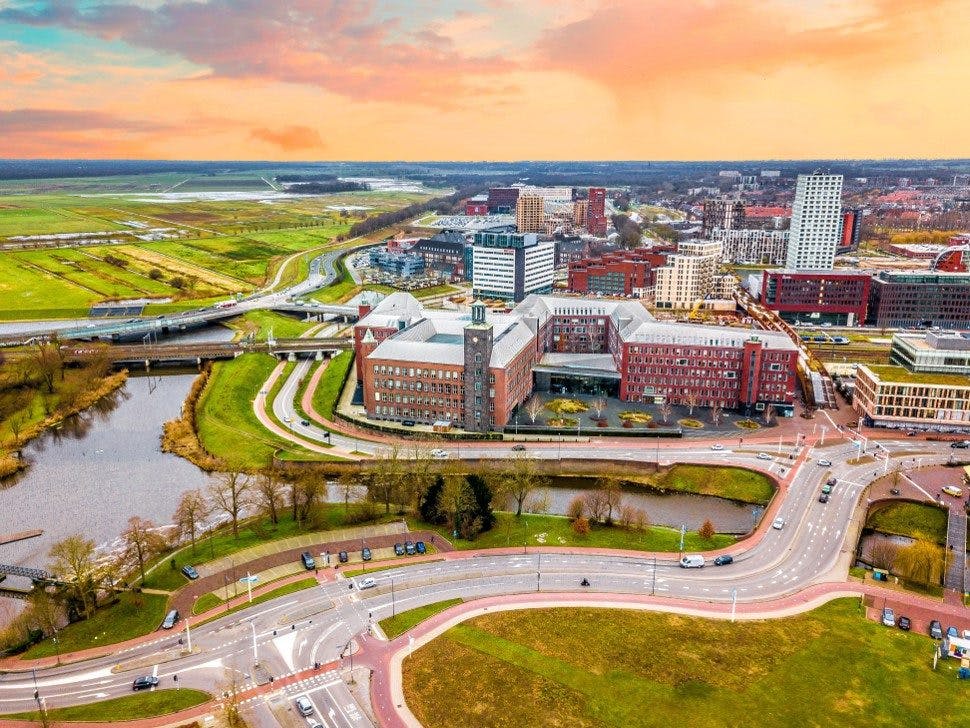Ruben Dijkstra was only made responsible for Ørsted’s Belgian and Dutch markets relatively recently. After 14 years, he left Eneco in September 2022, a renowned Dutch energy company and developer of renewable energy assets, including offshore wind. Before that, Dijkstra spent about a decade in offshore oil and gas. "In 2008, I made my personal transition from fossil to renewable, on what I call the perfect wave," he says. "At the time, Al Gore was warning the world about how carbon emissions affected the atmosphere. It was a time of high oil prices and searching for alternatives. Putin had already started manipulating gas supplies to Eastern Europe, so energy independence was also a concern. The latter two arguments faded into the background for some time, but energy independence has since become as big a driver as our climate ambitions. High energy prices are also a factor. Now, 15 years later, all three issues that triggered my own transition are just as relevant as they were back then."
"Today, energy independence is perhaps as big a driver as our climate ambitions.”
Greening a gray industry
Ørsted is the world's largest player in the offshore wind market in terms of installed capacity, as well as wind farms in the pipeline that are waiting to be built. Dijkstra points out: "Our own ambition is to get to 30 gigawatts of offshore wind by 2030. Our operational wind farms and overall portfolio are currently good for 22 gigawatts.” The partially state-owned company, 50% of which is held by the Danish government, also has onshore wind and solar ambitions, in addition to its new, growing offshoot: ‘power to x’. This business unit aims to convert generated green power into other products such as hydrogen or e-methanol. “Electrification is one way to make industrial companies more sustainable, but replacing fossil gas with hydrogen, or using the more sustainable e-methanol in the maritime transport sector, is another. A project to manufacture this e-methanol is currently underway in Sweden;, while Ørsted is also developing more than 1 GW of electrolysis capacity in Zeeland. Ørsted’s Dutch HQ is based in The Hague; while wind farms Borssele 1 & 2 are managed from Vlissingen. The company’s next tender in the Netherlands is one for 4 gigawatts of offshore wind off the coast of IJmuiden (known as "IJmuiden Ver," ed.). “It’s an enormous scale, especially in the context of the Dutch energy landscape. That is why it is so important that we create demand for all the new green power on the horizon. Especially given climate minister Rob Jetten's ambitions: 70 gigawatts of offshore wind by 2050(equivalent to 140 times the capacity of the nuclear power plant in Borssele, ed.)."

Ruben Dijkstra, Ørsted
"Our own ambition is to get to 30 gigawatts of offshore wind by 2030. Our operational wind farms and overall portfolio are currently good for 22 gigawatts."
Creating new demands
Peak demand in the Netherlands is currently about 21 gigawatt, so future supply is set to outstrip demand significantly. According to Dijkstra, the answer is to create more demand: “This is partly in electric driving, partly in heat pumps, and to a very large extent in making Dutch industry more sustainable. However, demand will have to increase simultaneously with supply to avoid a situation in which too much green power goes unspoken for, causing market prices to plummet. “Negative energy prices - when supply significantly outstrips demand - are becoming increasingly common in the Netherlands.” In the original energy system, supply was demand-driven, but Dijkstra is confident that it is set to pivot to a supply-driven market. “Users will move to charging their car in the afternoon, when solar power abounds, rather than charging it overnight. Not home charging stations, but office charging stations will become the norm, as will giving your energy company control over your washing machine. You can still load your washing machine in the morning, but the energy company will decide when it is switched on. It will require a behavioural shift, from consumers and industry. Fortunately, pricing can be used to influence behaviour.” In a system dominated by a variable supply of renewable energy, this will be the norm: “There were hardly any incentives in the original system to drive demand. We have lower off-peak rates, admittedly, but making power cheaper overnight than during the day will not promote sustainability. We will need dynamic hourly rates for that.I expect that to be the case within the next 5 years. Price sensitivity is increasing, which makes anticipating it more commercially appealing. The revenue model of battery storage is based on the inherent imbalance in the energy system. Huge battery projects are being proposed. They are the first step towards the flexibilization of demand, which will also find its way to consumers.”
"There are plenty of challenges in the Netherlands. But I am convinced that we will accomplish our objectives.”
Capacity will set the pace
The transition in the industry, however, is of a completely different order of magnitude. “For the industry's heat demand, the best solution would be to move away from the gas boiler and switch to an electric boiler. So I am not talking about making the existing electricity demand more sustainable, but replacing gas with electricity. This requires a new electrical connection. The question is how long the industry will need to find that capacity. Dutch system operators like Stedin and Alliander have their work cut out for them: they will have to work hard to expand the grids to create the capacity to facilitate this new demand. Capacity levels will set the pace of the transition in the Netherlands, Dijkstra stresses. “That is also why the government chose to include 'system integration' as award criteria for the most recent tender (Hollandse Kust West, ed.) and for the upcoming tender. Bidders will have to ensure that the power generated with offshore wind can be seamlessly integrated into the system by pairing it with additional demand. The previous round was won by RWE, which linked the generated power to electrolysis, which is yet to be developed, and partly to the heat grid. As a result, there is now a direct link between the capacity of the wind farm and flexible demands in the industry, solving possible future mismatches." Generally speaking, Dijkstra has a positive outlook: “From grid congestion to inflation and a lack of resources to the national nitrogen policy, there are plenty of challenges in the Netherlands. Still, I am confident that we will accomplish our objectives.” One of the main reasons is that there is still plenty to be gained for Ørsted in countries like the US and Taiwan.
“Hydrogen infrastructure will not be built in a day, but the Netherlands is progressing."
Critical infrastructure
The company is also looking to boost international cooperation within Europe. “The war in Ukraine has led to closer ties between European countries. There are discussions about building a hydrogen network, about the possibility of making Spanish hydrogen available to German and Dutch industrial companies via France. “Hydrogen infrastructure will not be built in a day, but the Netherlands has been progressing by appointing Gasunie as the transmission system operator (TSO) for hydrogen. They are working out how to repurpose pipes for hydrogen in the existing network, which requires international coordination on infrastructure and hydrogen quality.” Dijkstra agrees that the attack on the Nord Stream pipelines has been a wake-up call, revealing the vulnerability of critical infrastructure. "The same goes for offshore wind. Large capacities are at stake: At IJmuiden Ver, 4 gigawatts pass through two cables to the coast. If malicious persons blow up a 2 gigawatt cable, the consequences will be greater than only a minor ripple that can be managed by opening up reserves. It will have a significant impact and might even trigger a blackout. As an industry, we have sat down with the government to explore ways to improve safety. It is uncharted territory: we do not even know which enemies we have to protect ourselves against. Whoever was responsible for destroying the Nord Stream pipeline proved that it was possible. The attack prompted us to critically review our processes and systems, looking at both physical barriers and cyber security."
Data, math and offshore wind
“Models and data are widely used in our industry. Before you decide to invest, you need accurate insight into the potential yield of a wind farm. This is easier said than done, because all the wind models we used to use are based on onshore wind turbines. As a result, we can’t use them to predict how a wind farm in England will affect a Danish wind farm with a westerly wind. That’s where the offshore industry is now looking to make major improvements. Once we get a farm up and running, we follow weather fronts as closely as we can. We also benefit from these insights on the trading floor. We also have an arsenal of sensors and data to track how components behave, to analyze outages and to schedule preventive maintenance. We shuttle back and forth between Vlissingen and our offshore wind farm every day. Whether we can get off the boat and onto the wind farm depends on the wind and waves. and while it’ll always be a judgement call for the captain, making the trip when you know that the chances are slim is a waste. Using data to predict the odds of accessing the turbines would be very interesting, as it would help cut the number of unnecessary trips.”


